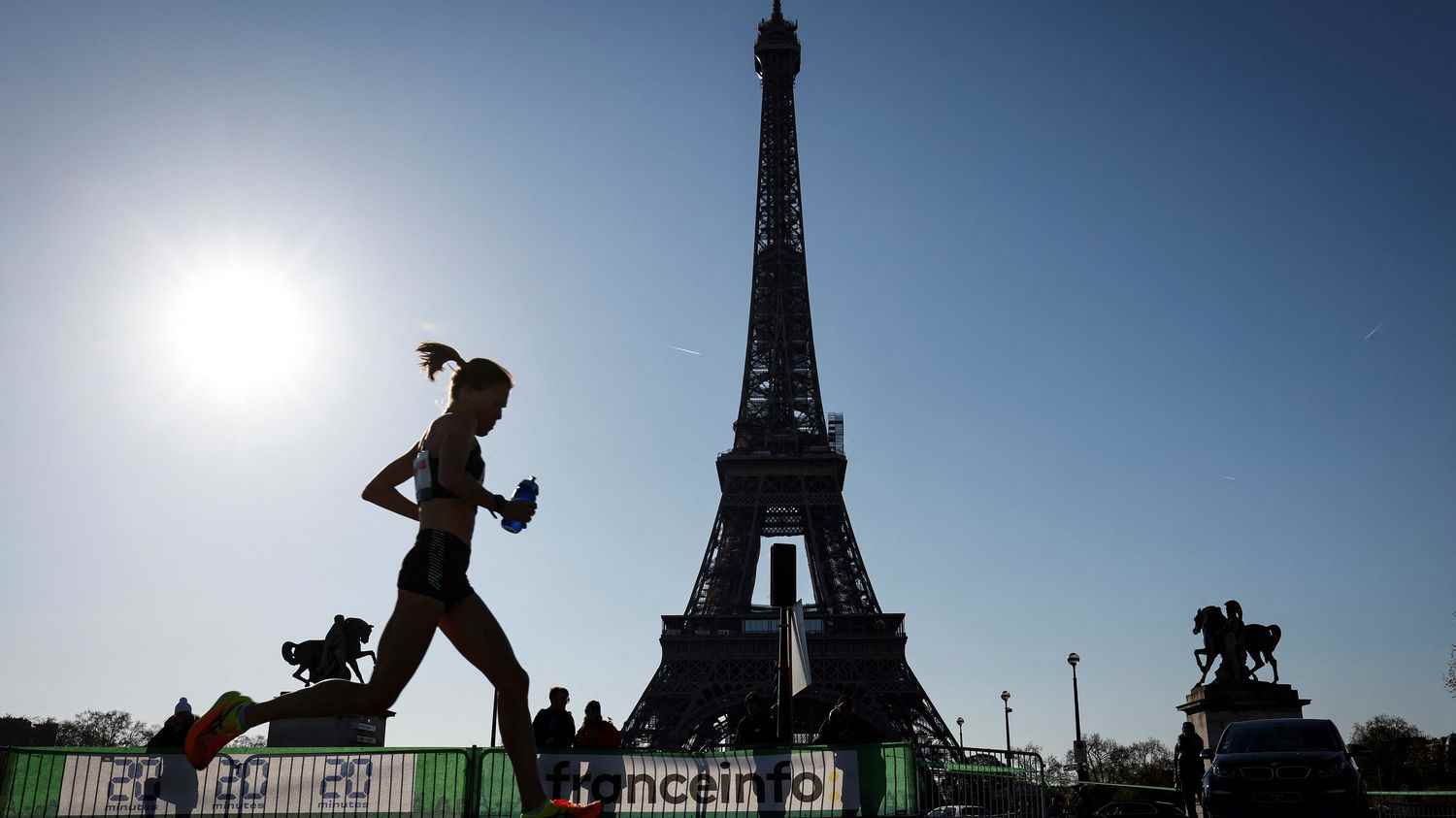His journey will probably go down in history. The Paris 2024 Olympic Games marathon, which will take place on August 10 and 11, 2024, will follow a Paris-Versailles route back and forth, announced the Organizing Committee for the Olympic Games (Cojo), Wednesday, October 5. “This unique course will be spectacular and demanding”, rejoiced the Cojo. “On will attach sporting history to a part of the history of France”, adds Alain Blondel, designer of a route that will visit the most famous monuments of Paris and its western suburbs.
The start will be given from the Paris City Hall for a start of the journey in the heart of the most beautiful monuments of the capital. The marathon runners will pass by the rue de Rivoli, then by that of the Louvre to arrive at the place de la Bourse and then go around the Opéra Garnier. They will then have to take rue de la Paix to reach place Vendôme, before crossing the Louvre at the level of the Carrousel and its Pyramid. The 160 athletes at the start (80 men, 80 women) will then take the quays of the Seine, pass under the Pont de la Concorde as well as under the Pont de l’Alma, and reach the Trocadero from above with a first view of the tower. Eiffel. The route will send them to Boulogne-Billancourt, after passing the Porte de Saint-Cloud. Once past the bridge and the town hall of Sèvres, it will become more complex.
A 4 km ascent in Ville-d’Avray will take the runners to an altitude of 183 meters, the highest point of the race, before bringing them down about 1 km to arrive at the Palace of Versailles. At this historic point, and after 23 km of racing, the marathon runners will take the avenue de Paris, with the castle in the background.
From there, you will have to cross the towns of Viroflay and Chaville. An additional difficulty then awaits the athletes: for 900 meters, the competitors will come up against the Côte des Gardes, with a maximum slope of 13.5%. At the 30th kilometer, the athletes will attack the descent, “with a very delicate passage at 13.4% to arrive at Issy-les-Moulineaux at the 32nd kilometer”, indicates Alain Blondel, the athletics and para-athletics manager within Paris 2024 and at the origin of the route.

Over the remaining 10 km, the athletes will take the direction of the Iron Lady, before joining Avenue de la Bourdonnais, Avenue de Breteuil, then the roundabout on Avenue de Breteuil, before starting the last straight line of this route towards Les Invalides. The finish will be from the south at the Esplanade des Invalides, in front of 7,000 to 7,500 spectators.
“The strategic and technical management of this course is going to be a completely different challenge from what athletes and coaches are currently experiencing. They are going to be offered a difficulty they have never faced.”
Alain Blondel, athletics and para-athletics manager at Paris 2024at franceinfo: sport
“It’s a course that we assume completely, adds Alain Blondel. We got out of the classic marathon context with a time and a world record. The Olympic champion and champion may not be the fastest but they will be the strongest because there will be very delicate sequences and it will be a challenge to prepare for them.”

This course was particularly praised by Paula Radcliffe, holder of the women’s world record between 2003 and 2019: “With its unique profile, the Paris 2024 marathon represents a great sporting challenge for athletes, in a sumptuous setting. This race, more uncertain than ever, promises to be legendary.” A “mythical” course which the general public can also try out through the marathon for all, accessible to the general public, and aimed at able-bodied and disabled people.
“I think this course will go down in the history of the Olympics”, assures Alain Blondel, at the origin of a route which was not chosen at random. “We wanted a course with something more, which tells a story, and which makes sense”, comments Aurélie Merle, director of sports competitions within Paris 2024.
It is with this in mind that the organizers sought their inspiration in the history of France. “The route is inspired by one of the founding elements of our history, which is the women’s march, which took place on October 5 and 6, 1789”, explains Aurélie Merle. On those days, merchants, shopkeepers and workers from working-class suburbs gather in front of the Hôtel de Ville in Paris to demand bread, while a food shortage hits the capital. Between 6,000 and 7,000 Parisian women, joined by men, cross Paris, to go to Versailles in order to claim bread and reforms from the king, and push him to return to Paris. That day, Louis XVI agreed to ratify the Universal Declaration of Human and Citizen’s Rights. October 5 and 6, 1789 are thus part of the “great days” of the French Revolution.
“This revolutionary, popular and feminist march is in line with the vision of Paris 2024, where we want revolutionary Games.”
Aurélie Merle, director of sports competitions within Paris 2024at franceinfo: sport
“Making the spotlight on women has been part of Paris 2024’s DNA from the start, particularly through our emblem (the Marianne), or through the organization of the first Joint Games in history”, continues Aurélie Merle. Moreover, in this same logic, the organizers decided, with the agreement of World Athletics (the International Athletics Federation), that the women’s marathon, on the Olympic program since 1984, closes the athletics events on the last Sunday of the Games. The final podium of the Olympic Games, during the closing ceremony, will therefore be in honor of the marathon runners, a first.
